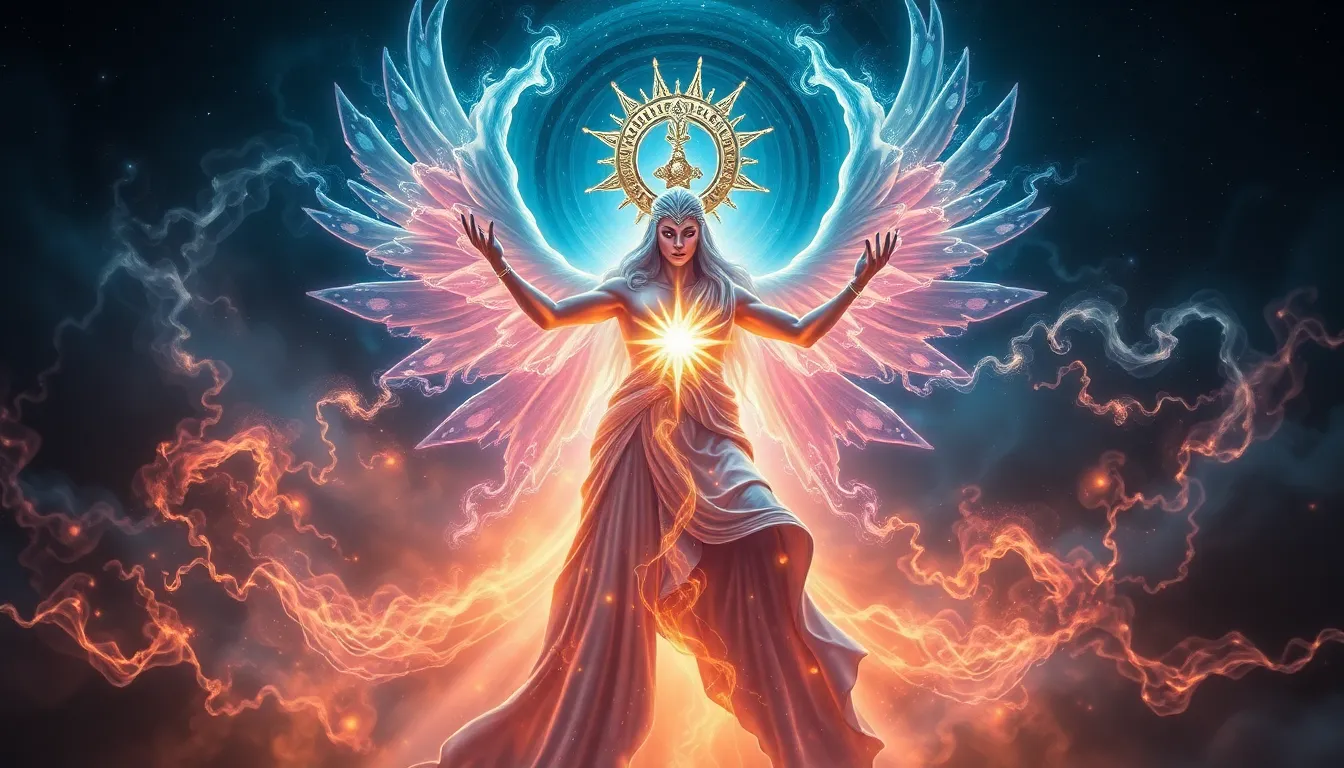Anubis’s Role in the Judgment of the Dead: Weighing Hearts and Defining Fate
I. Introduction
Anubis is one of the most recognizable deities in ancient Egyptian mythology, often depicted with a canine head and a human body. His primary role as the god of the afterlife positions him as a crucial figure in the beliefs surrounding death and the afterlife in ancient Egypt. The Judgment of the Dead, a pivotal event in this mythological framework, reflects the ancient Egyptians’ deep-seated beliefs regarding morality, justice, and the fate that awaits them after death.
This article aims to explore Anubis’s role in the Judgment of the Dead, shedding light on the significance of this ceremony and the implications it held for the souls of the deceased in ancient Egyptian culture.
II. Anubis: The God of the Afterlife
A. Origins and attributes of Anubis
Anubis’s origins can be traced back to the early dynastic period of ancient Egypt. Initially associated with the process of embalming and the protection of the dead, Anubis evolved into a more complex figure embodying the entire afterlife process.
Some key attributes of Anubis include:
- Guardian of the deceased
- God of mummification
- Protector of the tombs
B. Symbolism associated with Anubis
Anubis is often symbolized by the jackal or a man with a jackal head, representing his role as a protector of graves and the dead. The color black, associated with fertility and rebirth, is also significant in his imagery, as it represents the fertile soil of the Nile and the resurrection of the dead.
C. Role in Egyptian funerary practices
Anubis played a vital role in Egyptian funerary practices, ensuring the preservation of the body through mummification and safeguarding the deceased’s journey to the afterlife. His presence was essential in rituals, such as the opening of the mouth ceremony, which was believed to restore the deceased’s ability to speak and eat in the afterlife.
III. The Concept of Ma’at
A. Definition of Ma’at in ancient Egyptian culture
Ma’at embodies the concepts of truth, balance, order, and justice in ancient Egyptian culture. It is not just a principle but a goddess, often depicted with an ostrich feather, representing the harmony necessary for society and the universe to function properly.
B. Relationship between Ma’at and Anubis
Anubis and Ma’at are intricately linked in the judgment process. As the one who weighs the hearts of the deceased against Ma’at’s feather, Anubis ensures that the principles of truth and justice are upheld during the Judgment of the Dead.
C. The significance of truth and justice in the afterlife
In ancient Egypt, living a life in accordance with Ma’at was essential for achieving a favorable judgment. The belief that one’s actions in life directly influenced their fate in the afterlife underscored the importance of moral integrity and ethical behavior.
IV. The Weighing of the Heart Ceremony
A. Description of the ceremony
The Weighing of the Heart ceremony is one of the most iconic elements of the Judgment of the Dead. After death, the soul would be led to the Hall of Judgment, where Anubis would conduct the weighing of the heart against the feather of Ma’at.
B. The role of the heart as a symbol of the soul
In ancient Egyptian belief, the heart was considered the seat of intelligence and emotion, thus representing the true essence of the individual. It was believed that the heart retained the moral weight of a person’s deeds throughout their lifetime.
C. The involvement of other deities in the ceremony
During the weighing ceremony, Anubis was not alone. Other deities played crucial roles, including:
- Osiris: The god of the afterlife who presided over the judgment.
- Thoth: The god of wisdom and writing who recorded the results of the weighing.
- Ammit: The devourer of the unworthy souls, waiting to consume the hearts of those who failed the judgment.
V. The Scale of Justice
A. The mechanics of the weighing process
The weighing process involved placing the deceased’s heart on one side of a scale, while the feather of Ma’at was placed on the other. Anubis, using his expertise, would balance the scales to determine the fate of the soul.
B. The significance of the feather of Ma’at
The feather of Ma’at symbolizes truth and justice. If the heart weighed lighter than the feather, the soul was deemed pure and worthy of entering the afterlife. Conversely, if the heart was heavier, it indicated a life filled with wrongdoing.
C. Outcomes of the weighing: passing and failing
The outcomes of the weighing were clear:
- Passing: The righteous soul would be granted passage to the Field of Reeds, an idyllic afterlife.
- Failing: The unworthy would face annihilation, as their heart would be devoured by Ammit, resulting in eternal oblivion.
VI. Consequences of the Judgment
A. What happens to the souls of the righteous
Souls deemed worthy would enjoy eternal life in the Field of Reeds, a paradise resembling their earthly lives, where they could partake in all the pleasures they enjoyed during their lifetimes.
B. The fate of the unworthy souls
Those who failed the judgment faced a grim fate: their hearts would be consumed by Ammit, leading to their permanent annihilation. This outcome served as a powerful deterrent for moral misconduct during life.
C. The concept of eternal life versus annihilation
The duality of eternal life versus annihilation reflects the moral framework of ancient Egyptian society. Living according to Ma’at was paramount, as it determined not only one’s status in life but also their fate in the afterlife.
VII. Anubis in Art and Literature
A. Representations of Anubis in ancient art
Anubis was a popular figure in ancient Egyptian art, often depicted in tomb paintings, sculptures, and carvings. His imagery served as both a reminder of his protective role and a symbol of the afterlife.
B. Anubis’s portrayal in literary texts and religious inscriptions
Ancient texts, including the Book of the Dead, frequently mention Anubis, detailing his duties and significance in the afterlife. These inscriptions served to educate the living about the importance of proper burial practices and moral living.
C. Modern interpretations and adaptations of Anubis’s role
In contemporary culture, Anubis continues to captivate audiences, appearing in various media, including films, literature, and video games. His legacy as a symbol of death and the afterlife resonates in modern interpretations of ancient Egyptian mythology.
VIII. Conclusion
Anubis’s significance in the Judgment of the Dead underscores the complexities of ancient Egyptian beliefs about death, morality, and the afterlife. His role as the guardian of the dead and the mediator of cosmic justice highlights the importance the ancient Egyptians placed on ethical behavior and the consequences of one’s actions.
The enduring legacy of Anubis and the Judgment of the Dead continues to influence modern understandings of death and the afterlife, reminding us of the universal human quest for meaning in the face of mortality.
Ultimately, Anubis remains a powerful symbol of the balance between life and death, justice and injustice, and the quest for eternal life in the rich tapestry of Egyptian mythology.



